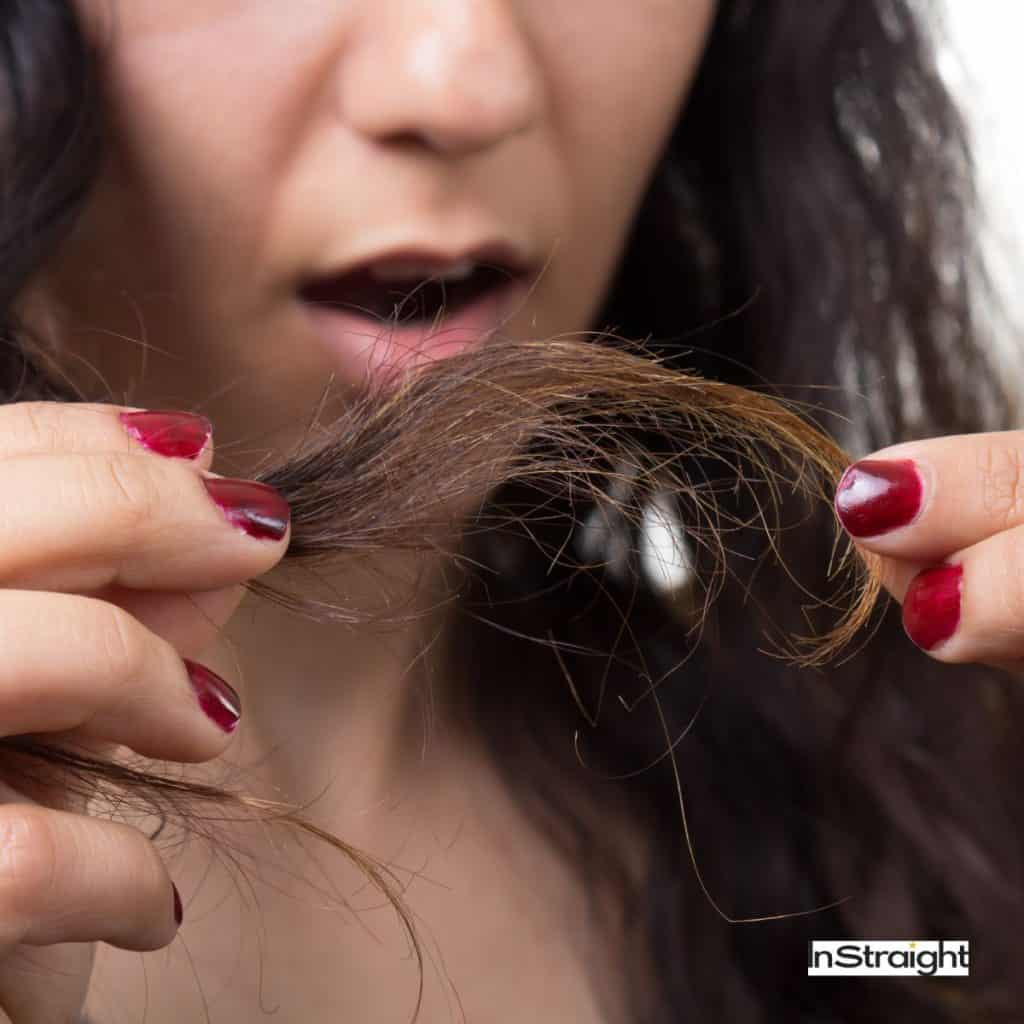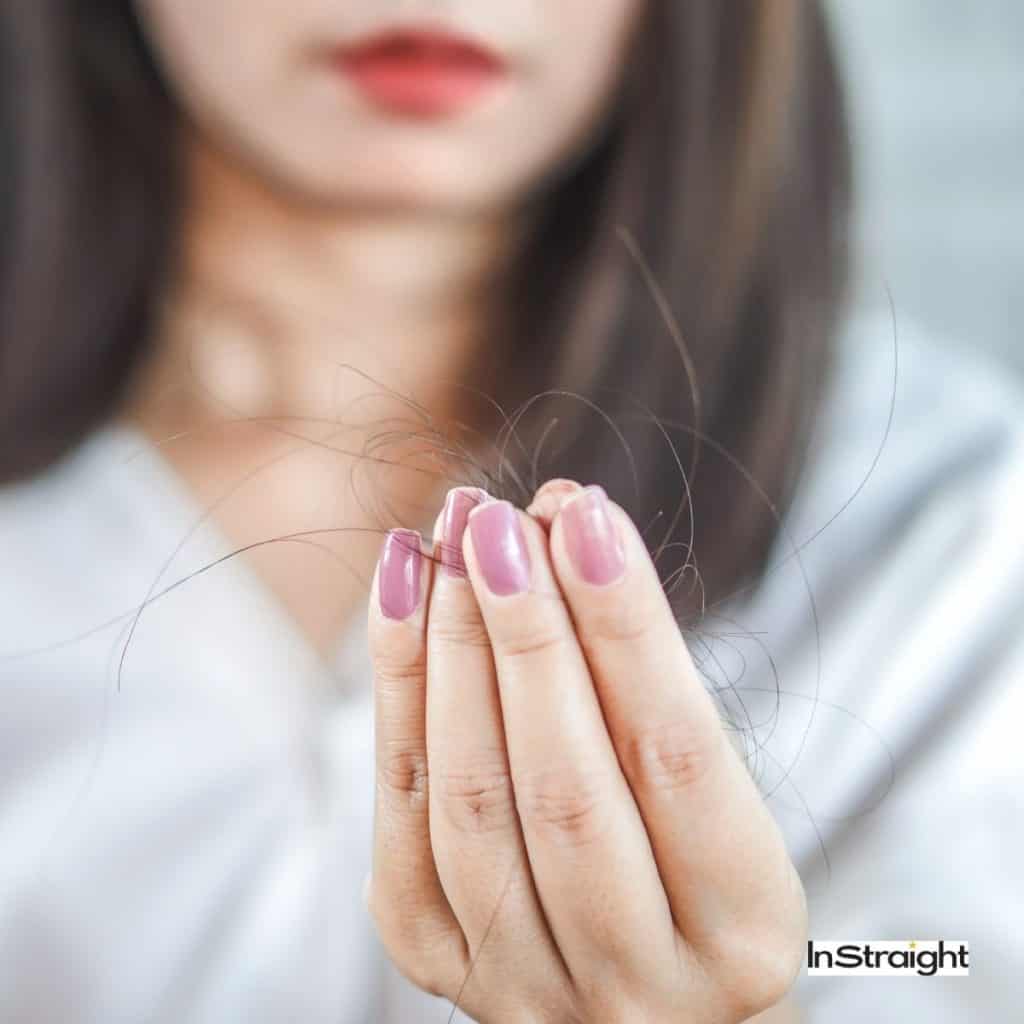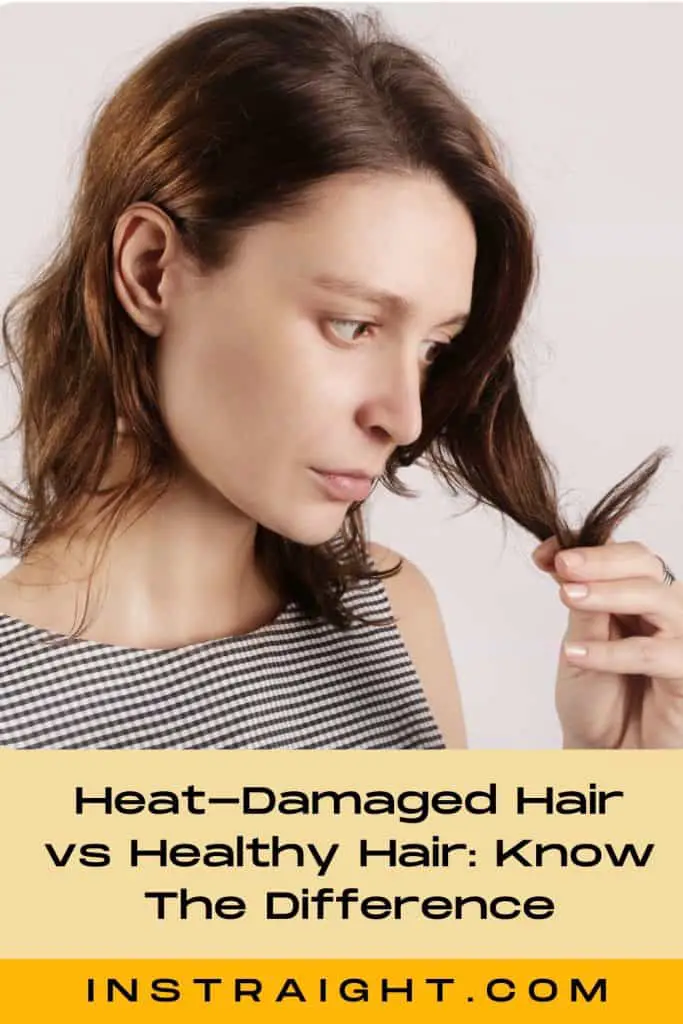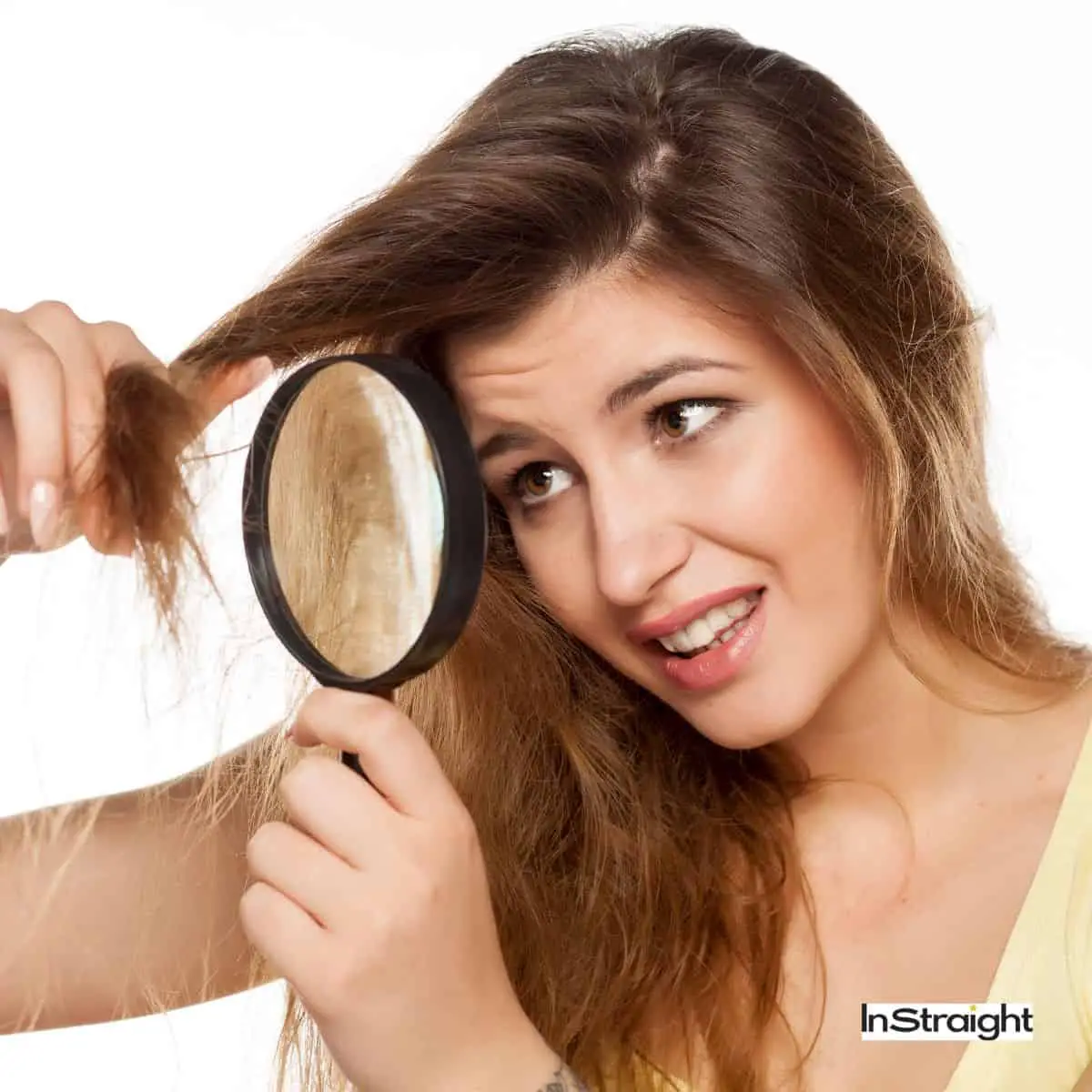I’ve always wanted to know what is heat-damaged hair vs healthy hair difference is. After all, my hair is important to me, and I want to make sure that I’m taking good care of it.
Healthy locks are silky, smooth, and elastic; they are easy to tend to, and you don’t have to worry about frizz or split ends. Heat-damaged hair is dry and brittle, and it can be difficult to style because it loses its elasticity.
In this guide, I will take you through everything you need to know about the battle between heat-damaged and healthy hair.
Key Takeaways:
- The main difference between heat-damaged and healthy hair is its appearance.
- Signs of heat damage include dryness, breakage, frizziness, and split ends
- The best way to prevent heat damage is to use a heat-protectant spray before styling your hair
- You should also avoid using high temperatures on your hair and try to let it air dry as often as possible.
Heat-Damaged Hair vs Healthy Hair
The most significant difference between heat-damaged hair and healthy hair is the LOSS of elasticity. When your hair is heat-damaged, the bonds that give it structure have been broken down. This can happen from over-processing, HEAT STYLING, or exposure to UV rays [1].
Your hair may feel dry and straw-like, which will be DIFFICULT to manage. You may also notice that your heat-damaged hair is more prone to breakage and split ends.

On the other hand, HEALTHY hair is well-moisturized and elastic. It is easy to style and manage and less likely to break or split.
So, how can you tell the DIFFERENCE between heat-damaged and healthy hair? I’ll be happy to take you through it.
How to Tell if Your Hair is Heat Damaged?
There are a few key signs that will HELP you determine whether your hair is heat-damaged.
One of the first signs is that heat-damaged hair will feel dry and BRITTLE to the touch. You may also notice that your heat-damaged hair is more difficult to style because it lacks elasticity.
Another sign of heat DAMAGE is split ends. When your hair’s bonds are broken, the ends of your hair can become frayed and split.

Finally, heat-damaged hair is often more PRONE to breakage. This is because the bonds that hold your hair together are weak and can snap easily.
READ MORE: The Best Straighteners For Damaged Hair
How to Tell if Your Hair is Healthy
In contrast, healthy hair is silky, smooth, and ELASTIC. It is also easier to manage and style.
Healthy hair has a healthy CUTICLE, which is the outermost layer of your hair. The cuticle helps to protect your hair from damage and keeps it looking smooth and shiny.
Another sign of healthy hair is that it is well-moisturized. This means that your hair is NOT dry or brittle and is less likely to break or split.

Finally, healthy hair is often more FLEXIBLE and less likely to break. This is because the bonds that hold your hair together are strong and can withstand more heat-styling and processing.
How Damaged is Your Hair?
I know how important it is to be able to tell whether or not your hair is DAMAGED, and that’s why I have this quick list of things to check for. This way, you’ll have a good idea of whether your hair needs repairs.
1. Feel the Texture of Your Hair
One of the first things you’ll want to do is run your fingers through your hair and FEEL the texture. It is likely heat-damaged if your hair feels dry, brittle, or straw-like. It is probably healthy if your hair feels silky, smooth, and elastic.
Pro Tip: Hair treatments that contain coconut oil and other natural oils have the most nourishing effect on your hair.
2. Check for Split Ends
Another thing you can do is look for split ends. To do this, take a SMALL section of your hair and look at the ends. If you see any fraying or splitting, then your hair is probably heat-damaged.
3. Examine Your Hair’s Cuticle
The cuticle is the outermost layer of your hair and helps protect it from damage. To check the HEALTH of your cuticle, take a small section of your hair and look at it closely. If the hair cuticles are raised or damaged, then your hair is probably heat-damaged.
Pro Tip: A hair mask is a great way to maintain hair health and take care of the hair shaft as well as the cuticles. It works on straight hair, curly hair – all kinds.
4. Check for Hairloss or Breakage
Finally, you’ll want to check for hair loss or breakage. To do this, take a small section of your hair and gently PULL on it. If you see any hair loss or breakage, then your hair is probably heat-damaged.

Pro Tip: If you notice your hair SHEDDING more than usual, this can also be a sign of hair loss – especially while you are shampooing or washing your hair.
5. Are There Multiple Tangles?
One of the heat damaged hair symptoms is that it is more challenging to style because it LACKS elasticity. This can also cause your hair to become more tangled.
To check for tangles, take a SMALL section of your hair and try to COMB it. If you find multiple tangles or your hair is difficult to comb, it is probably heat-damaged.
6. Has it Lost Elasticity?
Another sign of heat damage is that your hair has LOST elasticity. To check for this, take a small section of your hair and GENTLY pull on it. If your hair stretches and then snaps back into place, it is probably heat-damaged.
7. Check for Dry Hair
Another sign of heat damage is dry hair. To check for this, take a small section of your hair and RUN your fingers through it. If your hair feels dry and brittle, it is probably heat-damaged.
To FIX heat-damaged hair, deep conditioning treatments can moisturize the hair follicles and bring life back to the hair strands.
What Causes Heat-Damaged Hair?
The causes of damaged hair by heat are given as follows:
- Excessive use of hot tools (blow dryer, curling iron, flat iron, etc.)
- Using hot tools in high temperatures
- Exposure to the sun
- Not using a heat protectant
If you want to AVOID heat-damaged hair, it’s all about taking good care of it and implementing a hair care routine that involves nourishing treatments.
What Causes Dry Hair?
There are several things that can cause your hair to become dry. The most common causes are:
- Age
- Environmental factors
- Excessive coloring
- Chlorine
- Poor diet
- Dehydration
- Low thread count cotton pillowcase
FAQs
Can Your Hair Still Be Healthy With Heat Damage?
The answer is YES. Even if you have heat damage, it is still possible to have healthy hair. The key is to IDENTIFY the heat damage and then take steps to REPAIR it.
Does Damaged Hair Still Grow?
Yes, heat-damaged hair can still grow. However, it is more likely to BREAK off or split, which can prevent it from reaching its full-length potential.
Conclusion
Heat damage is a serious issue that should not be taken lightly. If you think your hair may be heat-damaged, it is important to IDENTIFY the signs and then take steps to REPAIR the damage.
As you can see, there is a pretty big DIFFERENCE between hair that is healthy and hair that has been damaged by the heat – which means it will be much easier for you to tell which you have.

Did you find it helpful for identifying whether or not your hair is heat-damaged? Let us know in the comments section!
Resources:
- 1. Lee Y, Kim Y-D, Hyun H-J, Pi L, Jin X, Lee W-S. Hair Shaft Damage from Heat and Drying Time of Hair Dryer. Annals of Dermatology. 2011;23:455.
- About the Author
- Latest Posts
Edith is a self-made entrepreneur with a keen business sense that others admire and a total “can-do” attitude. She’s always coming up with new ideas to anticipate her readers’ needs and help solve all their toughest beauty and skincare problems. You can find more about her Here.
FOLLOW HER on Linkedin and FACEBOOK and ThoseGraces Beauty Blog

